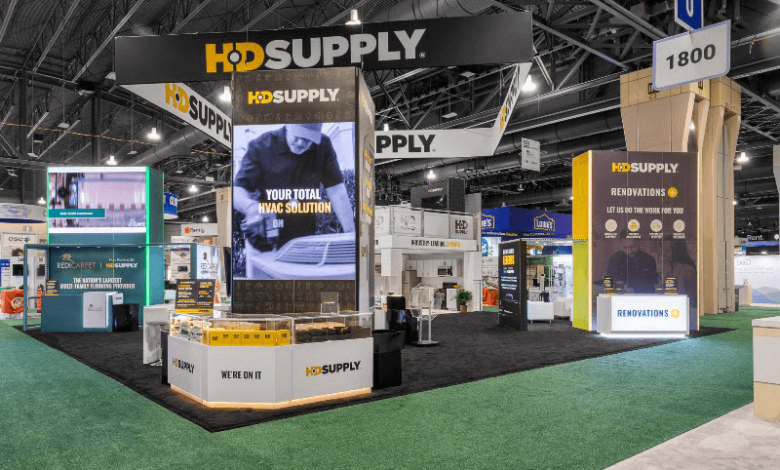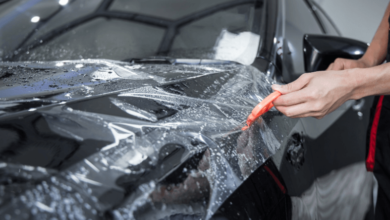Best Practices for On-Site Management During Trade Show Set-Up

B2B firms get a chance to meet prospective clients, display their products, and network at industry leadership events like trade shows. The trade show experience does not start when the doors open; it extends way prior to the event and your execution during the set-up phase is critical. On-site management makes sure that the booth is constructed in a timely manner, all materials are set for the right show, the team is in position and ready to demonstrate something impactful. This article will discuss on-site management best practices so that the set-up phase of a trade show goes as smoothly as the event itself.
Plan for Contingencies
Planning to solve problems even before the set-up day arrives and takes into consideration issues that may arise during the set-up day. While most trade show setups occur without a hitch, there are a number of scenarios wherein issues may arise. Problems including tardy deliveries, broken equipment, or surprise suppression of the venue can disturb order. These issues can be catastrophic for a B2B as they directly impact the booth presentation and operational functionality.
One of the best solutions to these challenges is working with a trade show builder who understands the nuances of trade show displays in Denver.
Their capacity to prepare for the unexpected means they can develop alternative solutions. It is necessary to have a comprehensive checklist outlining deadlines to be accomplished, inventories to be found, and some known potential obstacles like power needs or local limitations. With these plans set, any problem that arises within the set-up can be dealt with swiftly, minimizing interruption.
Streamline Communication Across Teams
The primary focus of effective communication is during the setup period of the trade show. It’s a delicate phase where many major activities take place at the same time – construction, logistics, and sometimes service provision. In this stage, each person’s progress should be shared with others so that all tasks can be completed in the scheduled time and within the right context. Poor communication can result in a blunder of sorts whereby a booth is not prepared in time due to some snag in the plans leading to confusion and delays.
A communication plan should have already been set in place outlining how the event’s tasks will be accomplished. Use of walkie-talkie handsets, instant messaging, or an onsite communication centre are some of the methods that can be adopted. Those involved in the setup should receive clear information regarding their tasks and deadlines set. If there is a need to hire builders for the trade show then proper communication will ensure that they understand what is expected from them, and are kept in the loop through the whole setup. As many hiccups as possible can be avoided if effective communication is practiced ensuring no significant delays are caused.
Assign Roles and Responsibilities
One of the best ways to smoothen in-site management is to allocate specific roles and responsibilities. The set-up phase is likely to involve a lot of work to be done, at times in a limited window of time. Having a team member responsible for each task would make the entire process more efficient and ensure nothing is missed.
You could, for instance, have one person be tasked with the booth setup and trade show display Denver so that someone else can manage the AV components. By allocating tasks, you make sure that no area such as marketing materials and promotional items distribution is neglected. Further, there should be a manager or team lead who can assess the progress and deal with any issues that arise.
Conduct Pre-Set-Up Walkthroughs
One important area that is usually ignored is the pre-set up walk through as this is the task that can greatly minimize surprises during the actual event. Before any setups start, you need to walk through the area that is going to be the event venue.
Examine your booth’s position, its logistics, and the overall area, making note of the illumination and space boundaries, and the location of the electric sockets. If the event allows it, familiarize yourself with the assigned venue a few days ahead of the event as this helps in understanding the space better. This familiarization will also help understand the layout etc., in advance so that you have a better plan regarding booth placement. Additionally, gathering these insights before the event will help focus on detailing the overall design and structure of the booth for setting it up.
This walkthrough helps you check the logistical aspects of the exhibit like the location of the booth and its distance from electric points, along with the placement of mass movement traffic. This is also a perfect time to gauge foot traffic volume and direction, as it can help you strategically position your booths for maximum visibility and access.
Test Everything Before the Event
After putting up and arranging the booth, you’ll want to conduct a thorough inspection before the event. This encompasses securing your exhibition units, AV equipment, and electronics tools. A positive impression is dependent on proper operational condition of equipment when the show starts, so double-checking is of utmost importance.
If elements of the exhibit allow interaction, such as tablets and palm screen touch interfaces, monitor them to make sure there are no initial technical failures.
Check the lighting in the room as well as how the sound system is set up for the area’s environment. In addition, ensure that your promotional design materials have been neatly organized in an easily accessible area. Don’t wait for the last minute to fix problems. Instead, test everything way before the event in order to solve all issues before the doors open.
Achieving effective on-site management during the trade show set-up should come as a priority to ensure that the set up runs smoothly. B2B businesses can sidestep customary issues and cement their booth’s presence by planning for issues ahead of time, sidelining communication barriers on different teams, allocating specific responsibilities and roles, doing tests before the actual event and being fully prepared before the negotiations start. A booth planned and erected with a reliable trade show builder in Denver will be done with trust and expertise at a professional level. Following the best practices eliminates the frustration of pre-show readiness and maximizes the opportunity to get business at the show. With good on-site management, businesses can place their full attention on brand visibility and lead generation enabling them to get returns for every dime spent.




